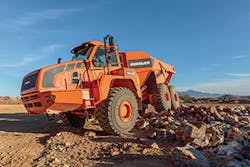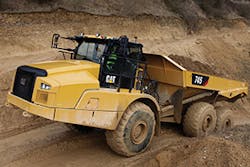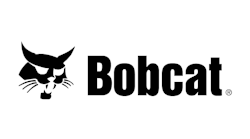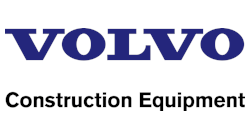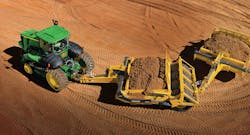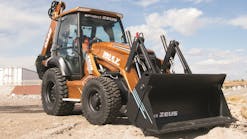Traditionally, the choice of dump truck type has almost always been due to the application or the environment. “The two types are not really competing against one another,” says Rob McMahon, product marketing manager for Komatsu. “Rigid trucks are best on improved roads: paved or with good gravel and good traction. Articulated trucks are better for off-road situations and unimproved roads.”
But there are what he calls “gray areas,” such as improved roads that have a lot of snow or mud. Nevertheless, McMahon believes there is still a “clear decision in most applications.”
That clarity may be getting harder to come by. According to Aaron Kleingartner, marketing manager for Doosan, these days there’s a bit of an “overlap” in the choice. “The evolution of the product allows some articulated truck aspects to pass to the rigid trucks,” he observes.
Applicable Criteria
Evolution aside, dump trucks seem unable to escape the application qualification. Choice remains primarily based on where the truck is used, as well as how it is used. Rigid trucks, which perform better on improved surfaces, are a good choice when a lot of material needs to be moved. “Rigid trucks have higher capacity, so they’re better on longer hauls with maintained roads,” says Maryanne Graves, product marketing manager for articulated dump trucks, John Deere.
It really depends on the material, length of the project, haul road conditions, loading tool, and how much production a customer is looking for on a daily basis, Scott Thomas, product application specialist (AT), Caterpillar, elaborates. Rigid frame trucks typically need hard-packed, well-maintained, well-drained haul roads, because they are rear-wheel-drive.
His counterpart at Caterpillar, Mike Mesnard, product application specialist (rigid frame), adds that off-highway trucks are more suitable for fixed, smooth, and stable haul roads with better underfoot conditions, such as quarries and mines. “Although they can operate in high-rolling resistance, poor underfoot conditions, this is not an ideal application for them. OHTs are designed for higher speeds and larger payloads.”
A John Deere 310E
“Rigid frame trucks work best on grades of 10 to 15% or less,” notes Thomas. The ADT can work on grades up to 35%, rolling resistance of 20%, and loaded haul distances from 500 to 1,000 feet. That’s because they are designed to keep all six wheels in contact with the surface, which is achieved by the oscillating and articulating hitch that allow the truck to work in extreme conditions. Higher ground clearance allows them to traverse rugged terrain, making them an optimal choice for untouched greenspace, landfills, and other undeveloped sites.
Articulated trucks have better maneuverability on soft underfoot, uneven terrain, and poor haul roads, thanks to their adaptive suspension that “adapts to uneven terrain,” and the fact that they feature two axles versus three, and have wider tires for more flotation, explains Graves.
Maneuverability is a factor, McMahon agrees, adding that the articulated truck has a benefit over the rigid frame truck because it can “steer in tighter spaces” for better turning. Its size is a contributing factor.
However, size can also be a limiting factor. As Thomas points out, the larger the project and the longer the truck is needed onsite, the bigger the equipment gets. “The duration of the job an AT would work sits between a few days to a few years. Rigid trucks will be on a job or mine/quarry for a minimum of five years. Sometimes those mines have a life of 50 years or more. So, with that much material to move over that long of a time, you will need a bigger offering of machines. At that point, it all comes down to cost per ton, and the bigger the truck, the lower the cost per ton is, and the better return on your investment.”
Although the rigid frame truck is generally considered able to carry more payload, Kleingartner points out that the articulated truck can be configured with or without a tailgate, and that the tailgate assists with containing flowable material, allowing it to carry more volume. “The articulated truck is more versatile,” he says. “This results in more options for materials to be hauled.” More options means more versatility.
Cat 745 AT5
The articulated hauler category was originated on the design principal of versatility, claims Eric Fatyol, GPE products manager, Volvo Construction Equipment. That principal states that a truck can haul a heavy payload almost anywhere and on any terrain, while remaining incredibly nimble and efficient. “Just by the nature of having an articulation joint, rather than being rigid, all articulated haulers are versatile machines.”
That said, there are nuances to design that make some articulated haulers more versatile than others. Design factors such as hydro-mechanical steering, ground clearance, automatic traction control, 100% differential locks, and varying drive combinations all play a role in the machine’s off-road capability and versatility. For additional off-road capability, Volvo offers a full suspension model, the A45G FS. “This FS models offers an industry-unique, fully hydraulic suspension on all wheels, which allows the machine to work in the most challenging off-road conditions” says Fatyol.
But as far as how different articulated haulers are used, and in what application, size, and payload capacity, are usually the primary considerations. Ultimately, it’s the amount of material that dictates the choice.
Volvo articulated haulers range from the 27.5-ton A25G to the 60-ton A60H. Fatyo says the A25G is a great fit for smaller excavation or site prep contractors and the A60H is well-suited to heavy earthmoving and highway building, as well as mining applications. “Those machines in the middle, including our flagship Volvo A40G, could be considered crossover machines that are equally as suited to large earthwork projects as they are to high-production quarry environments.”
Some of the technologies integrated into Volvo’s G-series models differ by size, simply because the size class dictates intended use to a certain extent. For example, on-board weighing now comes standard on models from the A35G up to the A60H, but is kept as an option on the smaller A25G and A30G, because it’s a tool that would be most useful in production environments, where larger size classes are a little more common.
Safety First
While they may be used in very different situations, the two types of dump trucks differ very little in safety features, with few exceptions.
To enhance rear visibility, camera is available, Kleingartner says. A front sloping hood also provides better visibility. It’s an important aspect because, as he says, the least-skilled operator gets put in the dump truck because of the steering wheel, so added safety features are a good idea.
For just that reason, Cat trucks feature additional mirrors (heated mirrors optional) that are wide-angled for improved visibility toward the rear. The sweeping hood design provides a panoramic view forward, and for a similar panoramic rear view, a camera system is incorporated, Thomas notes.
In addition to larger rear view mirrors for greater visibility, Volvo’s G-Series has an additional safety improvement: new orange accent colors for greater contrast on rails and cab entry points.
Cat makes sure the driver can safely enter and exit the cab by providing internal and external grab handles, extensive handrails, and slip-resistant walkways made of punched steel plate.
The Volvo A60H
Making sure the operator can see and be seen is important, but fleet managers are finding out it’s also important to make sure the operator is comfortable. “It’s a big factor,” insists Kleingartner. That’s why Doosan features adjustable seats for height and weight, an insulated box for coolers, and an automatic HVAC system.
Other safety features on Doosan trucks include an automatic dump. Based on the weight of the load, it controls the speed of the dump cycle and automatically lowers and stops when the body is down.
Beyond the cab, Kleingartner mentions the front-mounted turning ring assists in distributing weight equally side-to-side. The single rear differential and its free-swinging tandem helps to maximize tire ground contact. “Each side, independently, can traverse terrain.”
An automatic transmission adjusts to the right gear. “It manages downshifting when fully loaded going downhill,” says Kleingartner. “You never want to clutch-in on the downhill if you’re fully loaded. An electronically controlled transmission can shift for the best productivity.”
The Doosan DA40
There is also one rear axle. A tandem housing transitions power via gears to two axles, front and rear. It rotates up and down to allow constant ground contact for better contact in rough conditions and better grip in soft conditions. “It’s a benefit especially on rough terrain, because the center set of wheels is on the ground more,” explains Kleingartner.
The other things that should be on the ground—during daily maintenance, at least—are the operator’s feet, which is why John Deere has located access to checkpoints within easy reach.
Doosan does the same, with three main service points. When fluids and engine oil need to be checked or topped off, the hood opens 90 degrees for easy access. “The cab tilts back in a few minutes for transmission work,” says Kleingartner. There’s also an auto-greasing system. “The entire truck is automatically greased, based on hours.”
Cat features a ground-level external engine fuel cutoff switch and an external electrical system disconnect switch.
Redundant systems are unquestionably safety features. Komatsu also offers a secondary engine shutdown switch if the key doesn’t shut off the machine, and secondary steering so that if the hydraulic pressure drops, the electric motor has a backup. In addition, redundant braking circuits feature a secondary pedal with a completely separate system, separate accumulator, and three separate circuits. This can be especially important on rigid frame trucks due to the faster speeds they attain.
Cat also offers an electro-hydraulic secondary steering system that automatically activates in forward or reverse and when stationary if low pressure is sensed. Mesnard provides a laundry list of safety features found on Cat trucks: a safety access system, mirror options for peak visibility, camera vision systems, rollover protection systems, built-in brake safety, automatic braking, secondary steering systems, and a Vital Information Management System event code blue external light to warn of any event codes on the machine or safety-related warnings.
Like virtually all its competitors, John Deere provides standard tire pressure monitoring.
Tires make a difference, McMahon adds. Wider tires are better on articulated trucks to improve flotation and keep them from sinking. Rigid trucks want a tire
that can withstand rocks and a different kind of tread pattern to dissipate heat that results from faster travel speeds.
Putting the Brakes On
Fast speeds need corresponding good brakes, but, according to Graves, there is no automated braking in rigid trucks. However, ADTs feature a retarder that matches the gear to the slope to maintain travel speed when going downhill. “It saves on service brake wear,” she says.
The ADT has automatic retarding control, Thomas elaborates, which manages all parts of the retarding system. It knows what gear the truck should be in when loaded and when empty, and puts the truck in that gear. It also determines what level of retardation (engine compression brake) to have on and it will apply the service brakes when needed to maintain the correct engine RPM. “We also have manual retardation for those operators who like to manage the system themselves,” he says.
Due to the higher speeds traveled by the rigid frame trucks, their suspension is designed to drive smoothly. “If you’re able to move large amounts of material without limitation, the rigid is better,” says McMahon, “because you can get a larger truck to make fewer trips.” It’s also more beneficial for long hauls because the relief pressure changes per demand—which doesn’t occur in articulated trucks. “If you’re carrying a heavy load uphill, you need more power from the transmission, but you don’t need that power when you’re coming back empty, downhill.”
But both types have Komatsu traction control for adverse ground conditions. The system monitors the wheels to see if one is slipping, and applies the brakes to that wheel for traction. “It works differently on a rigid,” qualifies McMahon, “working on just the rear wheels. If the truck is side-slipping, it applies the brakes to that side.”
On the articulated truck, it works on the rear and center wheels by first applying the axle lock to the wheels together; if that’s not effective, and then it applies the brake. New models have an added acceleration sensor that identifies if the truck is in a turn and one wheel is faster. “It improves fuel efficiency and the life of the tires.”
Standard safety features on the Volvo G-Series articulated haulers include Hill Assist and a Dump Support System. Hill Assist holds the hauler in place when working on uphill slopes of 10% or greater, without the need to engage the parking brake. The feature automatically activates when coming to a complete stop on a hill and is disengaged when the operator accelerates.
The Dump Support System allows the operator to see the percentage side inclination of the truck and set allowable parameters for safe dumping operations. This feature can be configured three ways: off, on with an alarm, and on with an alarm and a complete bed stop. “The Dump Support System complements Volvo’s already user-friendly, patented Load, and Dump Brake technology,” says Fatyol. The tipping lever has automatic hold in the lowering position, which provides precise control for faster cycle times.
The Volvo A45G
The latest G-Series models from Volvo include Volvo Dynamic Drive and Dynamic Volvo Engine Brake systems. Dynamic Drive provides an improved gear shifting strategy that takes into consideration both the payload and the gradient of the slope. The machine will automatically detect when to choose a higher starting gear or when to up-shift earlier. When conditions require, the truck will prolong the gear, ensuring maximum rim-pull.
“With Dynamic Drive, customers can expect a 3 to 10% fuel efficiency improvement, depending on the model,” estimates Fatyol. With the new Dynamic VEB system, the torque and shift points are now dynamically adjusted against the current load, inclination, and rolling resistance, which improves brake life by reducing the need to use the brake and retarder pedal when going downhill.
Because the rigid frame truck is designed for higher speeds and steeper inclines, Komatsu installed a cruise control-like system to set the downhill speed without the need to operate the accelerator or the brake, McMahon says. This automatic speed control comes standard.
Cat’s OHTs have an automatic retarder control braking system to optimize machine braking capabilities, Mesnard says. “This system modulates the brakes at a rapid rate to most efficiently retard the machine while maximizing brake life.”
An on-board transmission control logic system—Advanced Productivity Electronic Control Strategy—manages transmission shifting at optimized shift points and ensures torque gets utilized as efficiently as possible, Mesnard continues. “By maintaining torque through shifts, APECS minimizes shift shock from transmissions shifts, helps extend drivetrain component life, keeps the truck from losing momentum on grade, and improves fuel efficiency by not having to regain momentum after a shift.”
With three braking systems—engine brake, hydraulic transmission retarder, service brake—the brake pedal is rarely used, Kleingartner concludes. “The engine brake maintains proper downhill speed, so we sell very few service brake replacements.”
Monitoring
In general, on-board telematics and monitoring systems share similar technology on both types of truck. At the last Con-Expo, John Deere introduced its new machine monitoring system that is able to monitor the health of the truck and remotely diagnose issues in the field, which reduces downtime.
Caterpillar’s Product Link system allows customers to see location, hours, payload, and fuel, as well as when the truck needs service. Notifications allow them to schedule maintenance.
Similarly, Doosan’s standard telematics system provides information such as hours under power, engine codes/parameters, rpms, and maintenance/service needs. It also indicates fuel level and idling time. That information is important because trucks have larger engines and use fuel at a higher rate at idle, so the amount of idle time can significantly affect operating costs. “It’s been offered for seven to eight years on our excavators and wheel loaders,” says Kleingartner. “Recently it’s been added to our articulated trucks.”
“Fleet managers use it to make their operation more efficient,” continues Kleingartner. Operators can focus on driving. “The electronics know how much you’re carrying, and your optimal speed. The vehicle is in control.”
The value of a strong onboard weighing system, Graves says, is that it takes the guesswork out.
Volvo articulated haulers come standard with CareTrack, the Volvo telematics system. What’s new, Fatyol says, is the way in which it’s managed, as well as the way it integrates with newly added technology features. “For instance, with the addition of a standard on-board weighing system, the hauler operator can see, in real time, the actual tonnage displayed on the in-cab Contronics display, which also includes a new Econometer feature showing fuel economy in the form of gallon per transported ton, per work cycle for the last 10 cycles.”
This data is also shared and remotely accessible by the fleet manager. Fatyol says Volvo is “constantly looking at ways to capture additional data that helps the fleet manager make more informed decisions,” although they realize that not every fleet manager has the time to log in and analyze data.
Instead, he believes most are simply using telematics for basic service alerts and machine location tracking. To serve their needs, in July, Volvo will introduce ActiveCare Direct, a continuous active machine monitoring service. Volvo will monitor the machine, and the dealer will contact the customer when an action is necessary. Additionally, monthly fleet reports provide specific recommendations on ways to improve the fleet’s utilization and reduce operating costs. Pilot customers have seen results such as a 10–15% reduction in fuel consumption and a 5–10% increase in machine utilization.
Cat’s Vital Information Management System provides detailed machine performance; fuel efficiency information; and production, diagnostic, and prognostic statistics.
Komtrax, from Komatsu, which carries free service for life, displays reports with information such as weight carried per load, number of trips, and fuel consumption in three ways: remotely on a phone, on a laptop, and in the cab.
A gauge on the dash tells the operator how he’s doing: fuel consumption, acceleration with the brake on, idling too long, etc. “There are dummy lights with suggestions for behavior modification,” says McMahon, which allows customers to use it as a training tool. “They can learn the feel of best operating practices.
“Customers can track what each operator does,” he continues, “but they can also track different shifts or different materials by using different operator IDs.” Monitoring materials—not drivers—in this way allows them to manage production to get a better idea of costs.
Costs are the Bottom-line in Business
While a rigid frame dump truck is still less expensive than its articulated counterpart, McMahon says the two are “closer in price than you’d think.” Ultimately, the choice of dump truck isn’t contingent upon price alone, but, as the old axiom states: according to the application.
